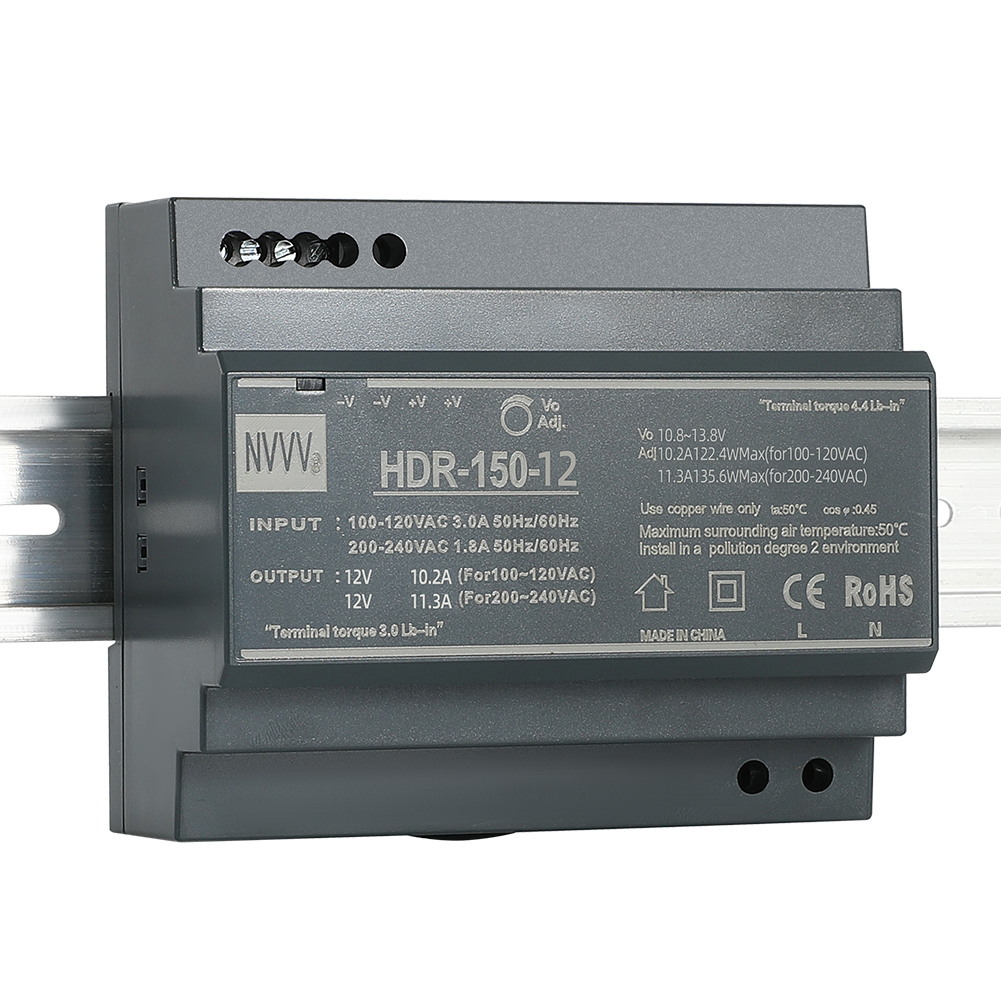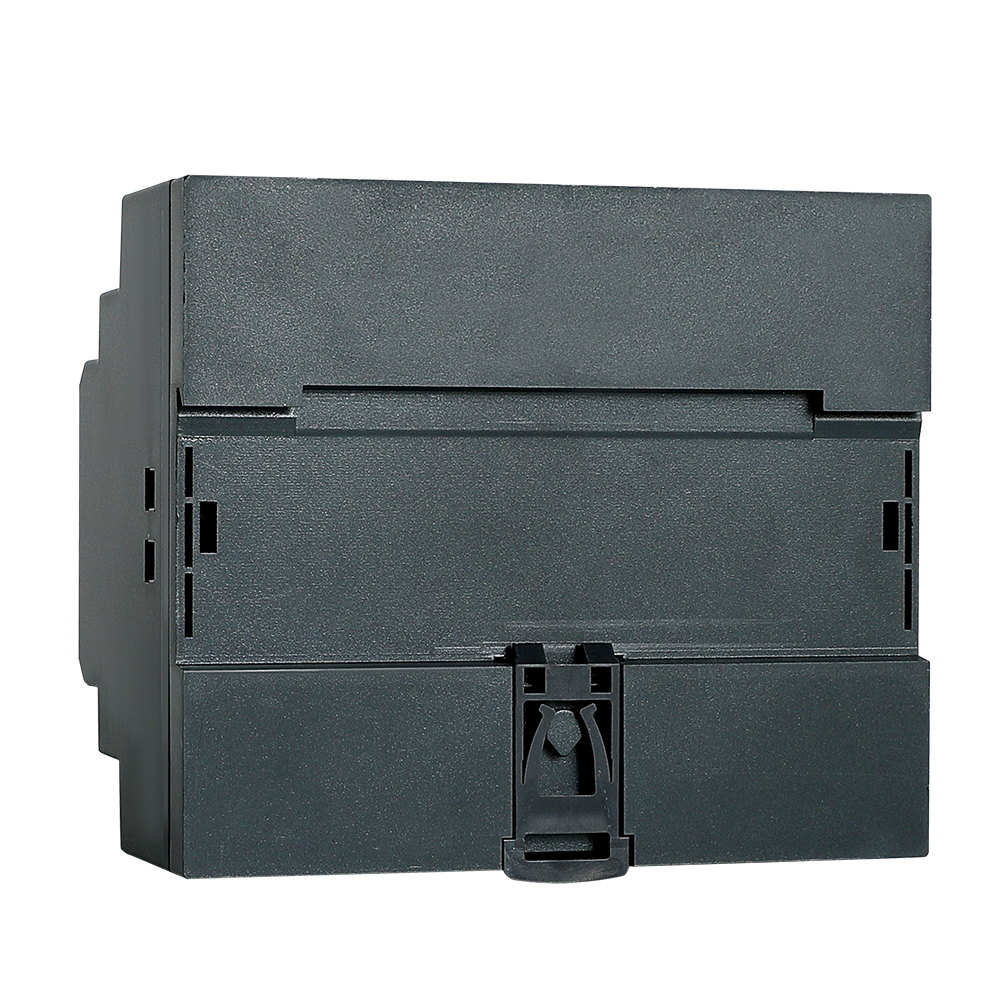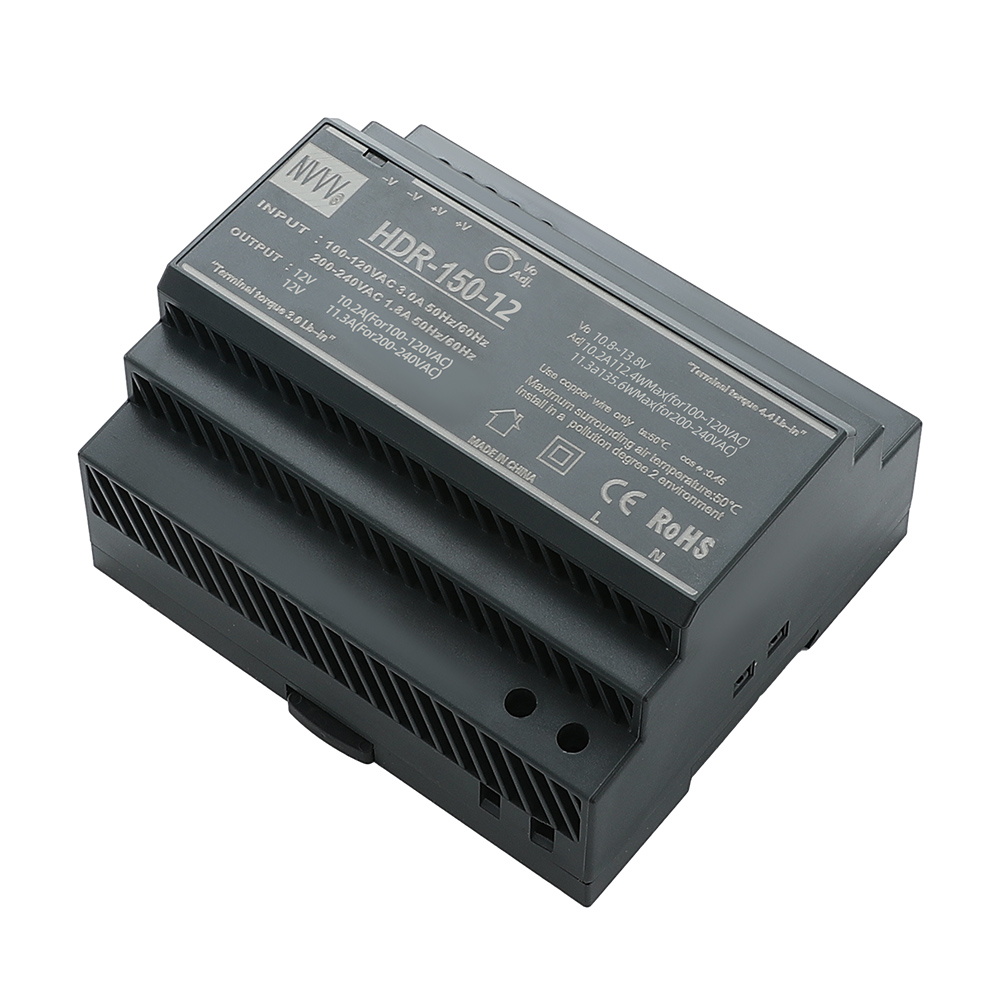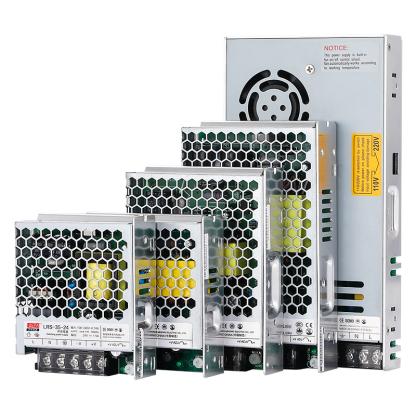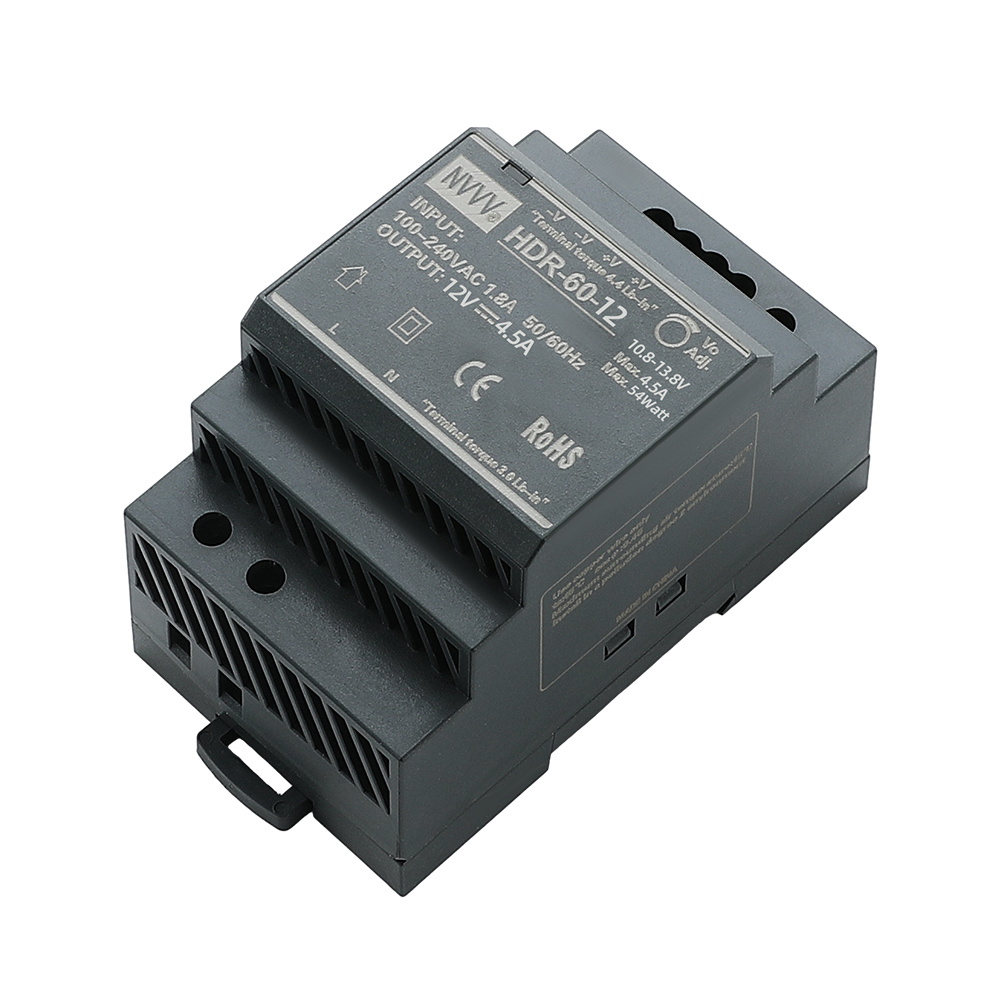The Importance of DIN Rail Switching Power Supply in Building Automation
The Role of Power Supply in Building Automation
In modern building automation, reliable power supply is the foundation of an efficient, intelligent, and energy-saving infrastructure. Whether it's for HVAC (Heating, Ventilation, and Air Conditioning) systems, security surveillance, smart lighting, or access control, every component relies on stable and efficient power. Among various power solutions, DIN Rail Switching Power Supply (SMPS) has emerged as an essential component in building automation systems due to its efficiency, space-saving design, and reliability.
Why Stable Power is Crucial for Building Automation?
Building automation systems consist of numerous controllers, sensors, and communication networks that operate continuously. A power failure or voltage fluctuation can cause system malfunctions, security risks, or even costly downtime. DIN Rail SMPS provides a stable and uninterrupted power supply, ensuring optimal performance of:
HVAC Systems – Regulating temperature, humidity, and air quality.
Lighting Control Systems – Managing energy-efficient lighting solutions.
Security and Surveillance – Powering access control, CCTV cameras, and alarm systems.
Elevators and Emergency Systems – Providing essential backup for operational safety.
Key Benefits of Using DIN Rail SMPS in Building Automation
1. Compact and Easy Installation
DIN Rail Switching mode power supply is designed for easy mounting onto standardized DIN rails within electrical cabinets, reducing clutter and optimizing space. This is especially beneficial in modern smart buildings where compact, efficient wiring is necessary.
2. High Efficiency and Energy Savings
Modern DIN Rail power supplies operate with efficiency levels of 90% or higher, significantly reducing energy loss. This efficiency supports sustainability initiatives, helping buildings achieve green certifications like LEED (Leadership in Energy and Environmental Design).
Additionally, adopting 90%+ efficiency DIN Rail SMPS can lead to 15-20% energy savings compared to traditional power sources, making it a cost-effective solution for long-term operation.
3. Reliability and Redundancy
In mission-critical applications such as fire alarm systems or access control, power redundancy is crucial. Many DIN Rail SMPS solutions support redundant power configurations, ensuring backup power in case of failure.
Furthermore, high-reliability DIN Rail SMPS significantly reduces maintenance costs by minimizing downtime. Studies show that using such reliable power supplies can decrease annual equipment downtime by 30%, ensuring smooth operation and reducing unexpected repair expenses.
4. Wide Input Voltage Range and Compatibility
With wide input voltage ranges (85-264V AC or 90-375V DC), DIN Rail SMPS adapts to different power sources, making it suitable for a variety of building automation systems worldwide.
5. EMC and Noise Immunity
Building automation environments often contain multiple electronic systems that generate electromagnetic interference (EMI). High-quality DIN Rail SMPS comes with electromagnetic compatibility (EMC) features, ensuring minimal interference and stable operation.
Real-World Applications in Building Automation
1. Smart Office Buildings
In office buildings, DIN Rail power supplies ensure reliable operation of automated climate control systems, energy monitoring tools, and security systems, contributing to a productive and comfortable environment.
2. Hospitals and Medical Facilities
Medical centers require uninterruptible and regulated power for critical life-support systems, patient monitoring devices, and automated pharmaceutical storage.
3. Airports and Transportation Hubs
Airports depend on automation for lighting, security checkpoints, baggage handling systems, and air conditioning. DIN Rail SMPS solutions provide stable power to these interconnected systems.
How to Choose the Right DIN Rail SMPS for Your Building Automation System?
When selecting a power supply for building automation, consider the following factors:
Power Output & Load Requirements – Ensure compatibility with connected devices.
Voltage & Current Ratings – Choose the right voltage (12V, 24V, 48V) based on the system’s needs.
Efficiency Rating – Look for high-efficiency models (above 90%) to reduce energy waste.
Redundancy Support – For critical applications, opt for redundant-capable power supplies.
Temperature & Environmental Ratings – Ensure reliability in extreme conditions if needed.
Conclusion
The adoption of DIN Rail Switched-mode Power Supply in building automation is indispensable for ensuring reliability, efficiency, and safety in modern smart buildings. From HVAC systems to security and lighting control, a high-quality power supply enhances system longevity and performance while supporting energy efficiency goals. As the demand for smart and sustainable buildings grows, investing in reliable DIN Rail SMPS solutions will remain a key priority for facility managers, engineers, and automation professionals.
For those involved in building automation projects, choosing a high-quality DIN Rail SMPS is a fundamental step toward achieving a stable, efficient, and future-proof automation system.

